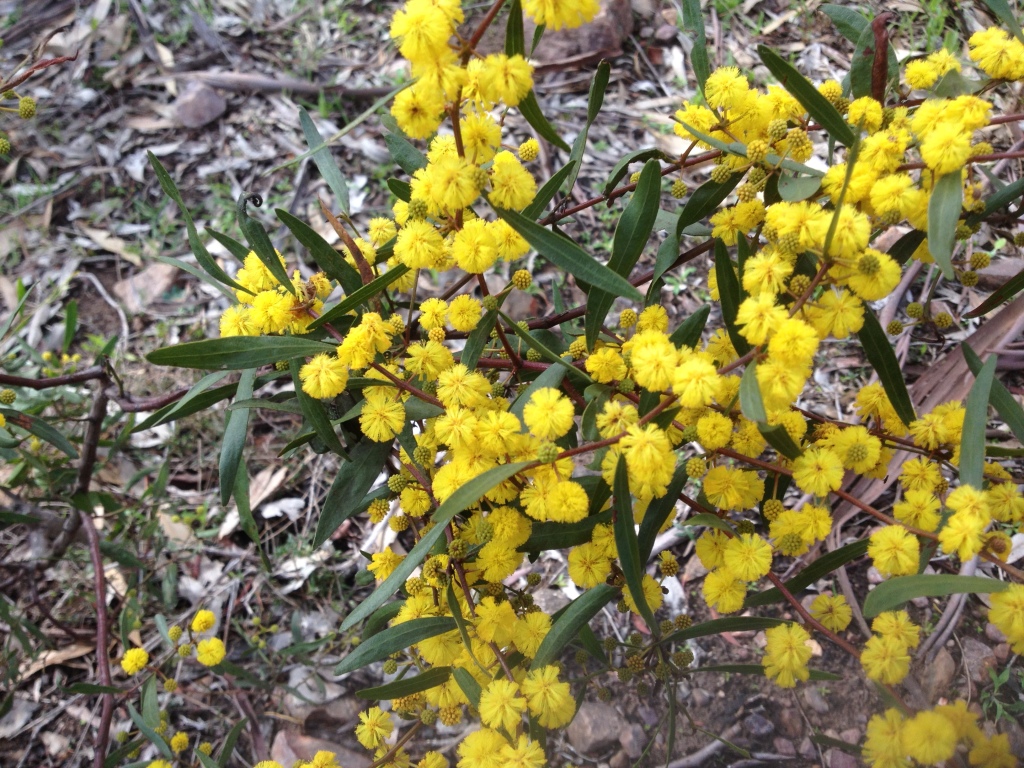Acacia montana
Benth. Mallee WattleViscid shrub or tree, 1–4 m high; branchlets subglabrous to moderately minutely hairy, hairs often antrorsely curved and more or less appressed. Phyllodes narrowly oblong to linear or narrowly elliptic, sometimes oblong-oblanceolate, 1–4 cm long, 2–7 mm wide, rather thin, sometimes obscurely resinous and minutely punctate, glabrous or subglabrous, obtuse; main veins 2, often yellowish, with lateral veins few and forming an often obscure, longitudinal reticulum; gland not prominent, 0.5–2 mm above pulvinus. Peduncles 1 or 2 per axil, 3–9 mm long, glabrous or minutely hairy, basal bract persistent; heads globular to shortly obloid, c. 25-flowered, golden. Flowers 5-merous; sepals quarter to half united. Pods linear, 2–5 cm long, 2–4 mm wide, coriaceous to thinly crustaceous, usually villous; seeds longitudinal, oblong, 3–4 mm long, more or less shiny, dark brown, aril folded at end of seed. Flowers Sep.–Nov.
LoM, MuM, Wim, VVP, VRiv, RobP, MuF, OtP, Gold, CVU, GGr, DunT, NIS. Most common on the inland slopes of the Great Dividing Range and adjacent plains, but also reported from Werribee, Long Forest, Brisbane Ranges and 'Warburton district'. It grows in a variety of soils often in open-forest or high shrubland.
A member of the A. verniciflua complex and sometimes resembling A. exudans which is distinguished especially by its phyllodes with obvious, shallow glandular pits and minor veins not forming a reticulum. Acacia montana also resembles broad phyllode forms of A. wilhelmiana which are distinguished by their golden minutely hairy peduncles and non-reticulate phyllodes.
Specimens with glabrous pods are uncommon and were described as var. psilocarpa, but formal recognition of this variety does not seem warranted.
Putative hybrids between A. aspera and possibly A. montana have been recorded from the Bendigo district.
Entwisle, T.J.; Maslin, B.R.; Cowan, R.S.; Court, A.B. (1996). Mimosaceae. In: Walsh, N.G.; Entwisle, T.J., Flora of Victoria Vol. 3, Dicotyledons Winteraceae to Myrtaceae, pp. 585–658. Inkata Press, Melbourne.
 Spinning
Spinning


